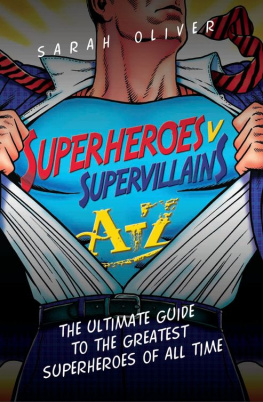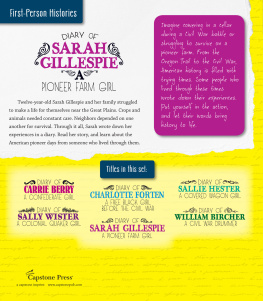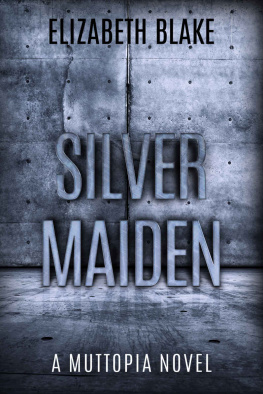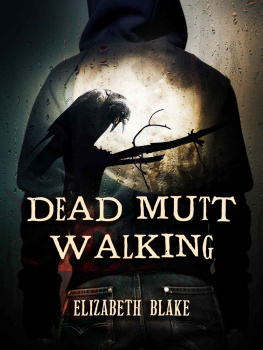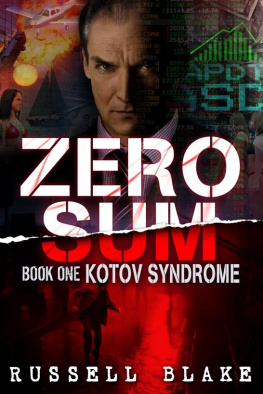Acknowledgments
Many people steered me straight in the course of researching this bookfrom the operations of a rural post office, to the mechanics of a submarine, to the physics of childbirth, to the world of radio broadcastingand Id like to thank Bob Smith, Bill Matzelevich, Whitney Pinger, Justin Webb of the BBC, Kevin Klose of NPR, and Bill Godwin and Brian Belanger at the Radio & Television Museum in Bowie, Maryland, for their generous answers to all my questions.
Maud Casey, Sean Enright, Linda Kulman, Susannah Moore, Rebecca Nicolson, Howard Norman, Linda Parshall, Claudia Rankine, and Joshua Weiner kept me on course during the writing of this book, not only reading drafts but asking essential questions of it and of me. There are hardly words enough to give them for what they gave me throughout these past years.
I am so grateful to the Virginia Center for the Creative Arts for time and space granted to me at a crucial time.
And last, without Stephanie Cabots persistence and great good humor and Amy Einhorns uncanny ability to see through into the heart of the matter, time and time again, this book quite simply would never have come to be.
And I am indebted to the following works for helping me to imagine the times: Mark Bernstein and Alex Lubertozzis World War II on the Air; Penny Colmans Where the Action Was: Women War Correspondents in World War II; Stanley Cloud and Lynne Olsons The Murrow Boys: Pioneers on the Front Lines of Broadcast Journalism; Michael Gannons Operation Drumbeat: The Dramatic True Story of Germanys First U-Boat Attacks Along the American Coast in World War II; Martha Gellhorns The Face of War; Doris Kearns Goodwins No Ordinary Time: Franklin & Eleanor Roosevelt: The Home Front in World War II; Gavin Mortimers The Longest Night: The Bombing of London on May 10, 1941; Laurel Leff s Buried by the Times: The Holocaust and Americas Most Important Newspaper Reporting World War II: Part One: American Journalism 1938 -1944 (Library of America, 1995); Nancy Caldwell Sorels The Women Who Wrote the War; and Mary Heaton Vorses Time and the Town: A Provincetown Chronicle.
WHAT HAPPENS TO a story around its edges? Will had asked. What happens after the part you gave us? If there is a question that falls at our feet, an unanswerable question, the one that we do not know we have picked up to carry forward through the years, then this was mine. A story like a snapshot is caught, held for a moment, then delivered. But the people in them go on and on. And what happens next? What happens?
The story knew. Didnt I say that, long ago? Didnt I hurl that at the postmistress as proof that her faith in order was amiss? An eyelid shutters open and shut, separating this moment from the next, inside from outside. What is remembered from what is seen. And some moments we are allowed to see it all, all at once. Our lives moving backward and forwardso we are one in a millionthat phrase that annihilates or transcends, depending.
Did Will love Emma? Im certain he did. The memory of his hand wrapped around my arm, and his whisper, this part of her makes you want to hold on, still made me shiver sometimes when others touched me there, because I remember the longing in his voice to touch his wife there where he was touching me. He loved her with all his heart. But he could not stay. His fight with the world meant he had to turn his face away from his home and his heart and walk into battle. Why? Its the mystery at the core, the thing that kept me walking up and down streets, in and out of peoples houses and their lives, asking questions. All around me, all my life, the glorious spectacle of human beings being.
And this vast, contradictory show Ive reported, Im leaving soon.
But not before I tell you the last part. I carried the doctors letter from London, across Europe, back home, and up to the door of the woman to whom it was addressed. I knocked and she answered and I looked at her and did not speak. I carried it but I never let it go. It lies unopened here in my desk. Thats all I have written, thats all I have to tell. Thats what the story knew.
Note
Though there is no evidence of a German U-boat beaching in Cape Cod, there were numerous close calls. As early as February 1941, Germanys Admiral Dnitz ordered a feasibility study of a surprise U-boat assault on the East Coast, and by January 1942, the first U-boat rose successfully, undetected, in the channel of New York Harbor. Throughout most of 1942, German U-boats ran so close to the Eastern Seaboard that they watched the dark silhouettes of people walking up and back along the beachside promenades against the lights of hotels, cars, and houses. The high hulls of the tankers steaming toward Europe with food and supplies were lit up as well, making them fantastic, easy marks. Of 397 ships sunk by U-boats in the first six months of 1942, 171 were sunk off the Atlantic Coast from Maine to Florida, some within view of people onshore.
Though she could not have had access to the portable disk recorder in 1941, what Frankie uses is a prototype of what came into common usage in 1944, ultimately enabling reporters to make live recordings from the battlefield. I took liberty with the date because World War II was the first war that was brought into peoples living rooms by radio, and I wanted to highlight the power of the voice to convey the untellable, the refugees speaking into an air into which they will vanish.
Edward R. Murrows broadcast in chapter one; his broadcast and Sevareids comments in chapter two; and the broadcast attributed to Ernie Pyle in chapter eight are quoted from World War II on the Air: Edward R. Murrow and the Broadcasts That Riveted a Nation by Mark Bernstein and Alex Lubertozzi (Sourcebooks, 2003).
Martha Gellhorns comment to Frankie in chapter twenty-four is a reconfiguration of what she wrote in her introduction to The Face of War (Simon and Schuster, 1959). I belonged to a Federation of Cassandras, my colleagues the foreign correspondents, whom I met at every disaster.
Walter Lippmanns remarks about war in chapter eleven are quoted from The Atlantic and America: The Why and When of Intervention, Life, April 7, 1941.
The Story Behind the Story
When I lived in a small town at the tip of Cape Cod, I used to watch the woman who delivered the mail walking up and down the street carrying her mailbag. I wondered if she ever read the postcards she was carrying, since she could. And I wondered if she kept the secrets, which she must have, about all of us. One afternoon, I had a vivid image of this woman standing in front of the sorting boxes in the back room of the post office with an envelope in her hand. I saw her standing there looking down at what she held, deciding, and then simply sliding the letter into her pocket. So Iris James, the postmistress, was born.
At the time, I remember thinkinggreat, theres my next novel.
But whose letter was she holding, and why? I realized that in order for the novel to have any suspense, it had to be set during a time when an undelivered letter might actually matterwhen the delay might create all sorts of mayhem. Because I had a whole stash of letters between my grandparents, written during the time my grandfather was serving in the Navy in the Pacific during World War II, I decided to set it then, plumbing their letters for atmosphere; and the letter the postmistress chose not to deliver would be from a man writing back to his wife on the home front.
So I had the outlines of a story, but still no idea what the story was about. In search of details that might trigger the novels direction, I spent months trolling through Life



